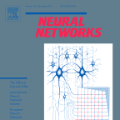Quantum Graph Neural Networks (QGNNs) present a promising approach for combining quantum computing with graph-structured data processing. While classical Graph Neural Networks (GNNs) are renowned for their scalability and robustness, existing QGNNs often lack flexibility due to graph-specific quantum circuit designs, limiting their applicability to a narrower range of graph-structured problems, falling short of real-world scenarios. To address these limitations, we propose a versatile QGNN framework inspired by the classical GraphSAGE approach, utilizing quantum models as aggregators. In this work, we integrate established techniques for inductive representation learning on graphs with parametrized quantum convolutional and pooling layers, effectively bridging classical and quantum paradigms. The convolutional layer is flexible, enabling tailored designs for specific problems. Benchmarked on a node regression task with the QM9 dataset, we demonstrate that our framework successfully models a non-trivial molecular dataset, achieving performance comparable to classical GNNs. In particular, we show that our quantum approach exhibits robust generalization across molecules with varying numbers of atoms without requiring circuit modifications, slightly outperforming classical GNNs. Furthermore, we numerically investigate the scalability of the QGNN framework. Specifically, we demonstrate the absence of barren plateaus in our architecture as the number of qubits increases, suggesting that the proposed quantum model can be extended to handle larger and more complex graph-based problems effectively.
翻译:暂无翻译




